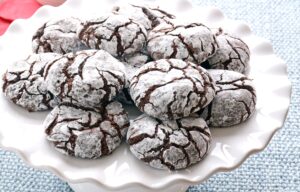




What is the difference between cornmeal and masa harina (masa flour)? It is corn flour right? Technically, they’re both made from corn, but the way they’re processed is quite different, and they’re generally best used in various recipes, with some exceptions. Cornmeal is ground dried corn and is often reasonably coarse in consistency and usually is found for purchase in color varieties of yellow or white in color. The corn in masa harina is soaked in food-grade calcium hydroxide to make hominy. Masa harina is also available in types of yellow or white. It is a matter of flavor preference. Yellow has a more pronounced corn flavor. White is a more subtle corn flavor. It is made into masa dough for tortillas and tamales by adding liquid. One can also fold a small amount of masa harina into yeast-risen loaves of bread or rolls for a dose of nutty, buttery richness. Yes, Masa is gluten-free, and ours is made in a dedicated gluten-free facility!

There’s always that image of the sweet Hispanic grandma who spends hours and hours making tamales in one’s mind. Somehow it makes the process seem overwhelming. But, it just doesn’t need to be that way. Tamales can be one of the simple meals. It takes just a few minutes to put them together, and then they cook in the crockpot or steam. When thought of this way, they can become one of your family’s go-to meals.
That being said, let’s dive right into tamales. The directions are pretty straightforward. The secret is whipping the shortening or lard. The more air is in the fat, the better the tamale. The other secret is the freshness of the Masa. It has to be good without a hint of bitterness. That’s where our masa flour comes in. It is beautiful stuff! Grab your bag and follow the process below.
2 cups panhandle milling masa flour
2 cups lukewarm chicken or vegetable broth
1 tsp baking powder
1 tsp salt
1 cup organic vegetable shortening
1 lb. lean cooked Chicken or Turkey, shredded
1 ½ ounce pasilla-ancho chiles, ground
1 tsp each whole ground: cumin seed, coriander seed, black peppercorn,
1 Tbsp. minced garlic
2T lime juice
2T olive oil
1/2 tsp salt
1 lb. corn
1 cup mild green chiles, chopped
1/2 cup onion, minced
6 ounces of sharp cheddar, shredded (optional for or go vegan cheese too)
16 dry corn husks
16 pieces 12×12 parchment paper
2 1/2 lb. prepared masa (tamale dough above)
